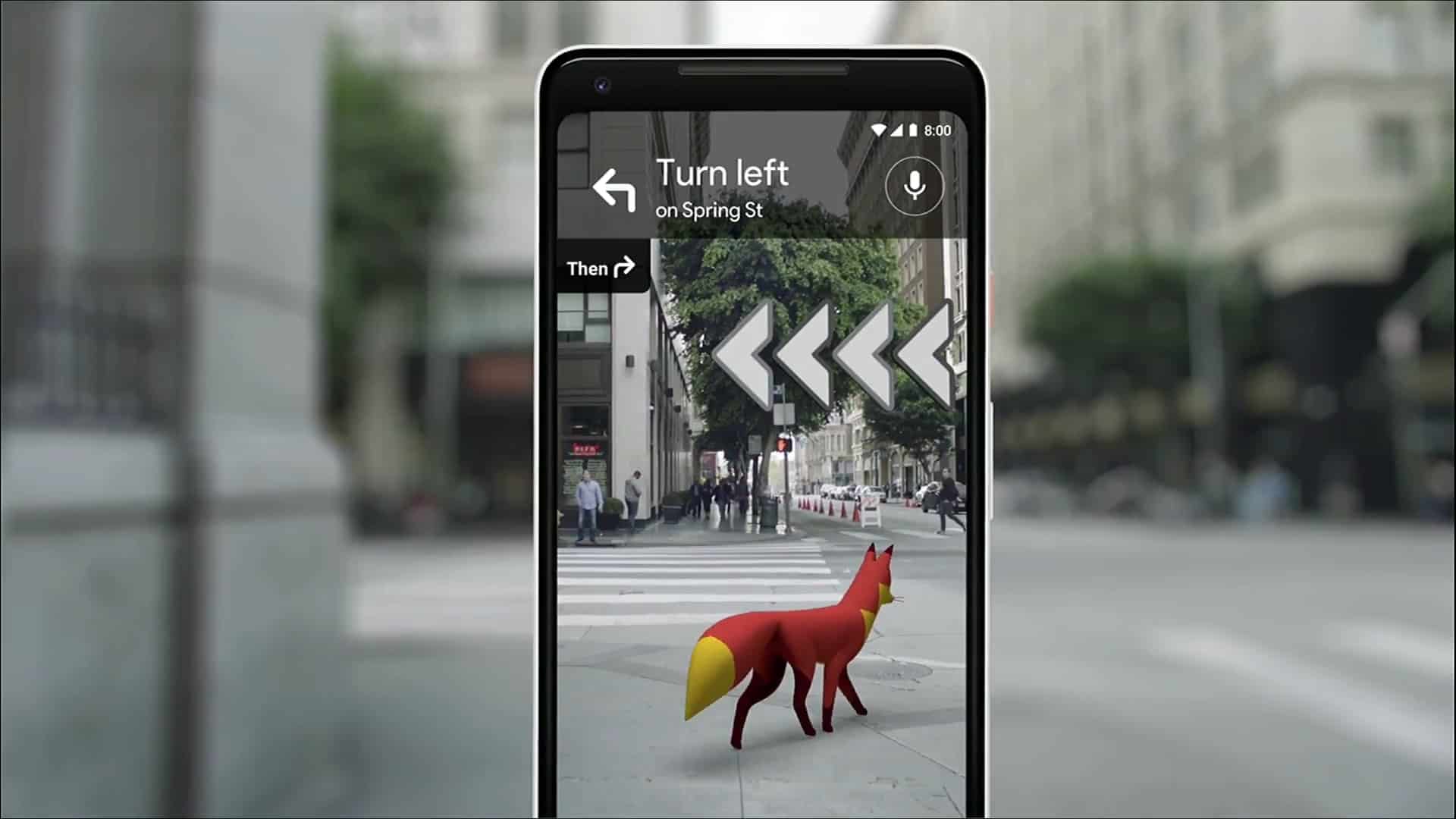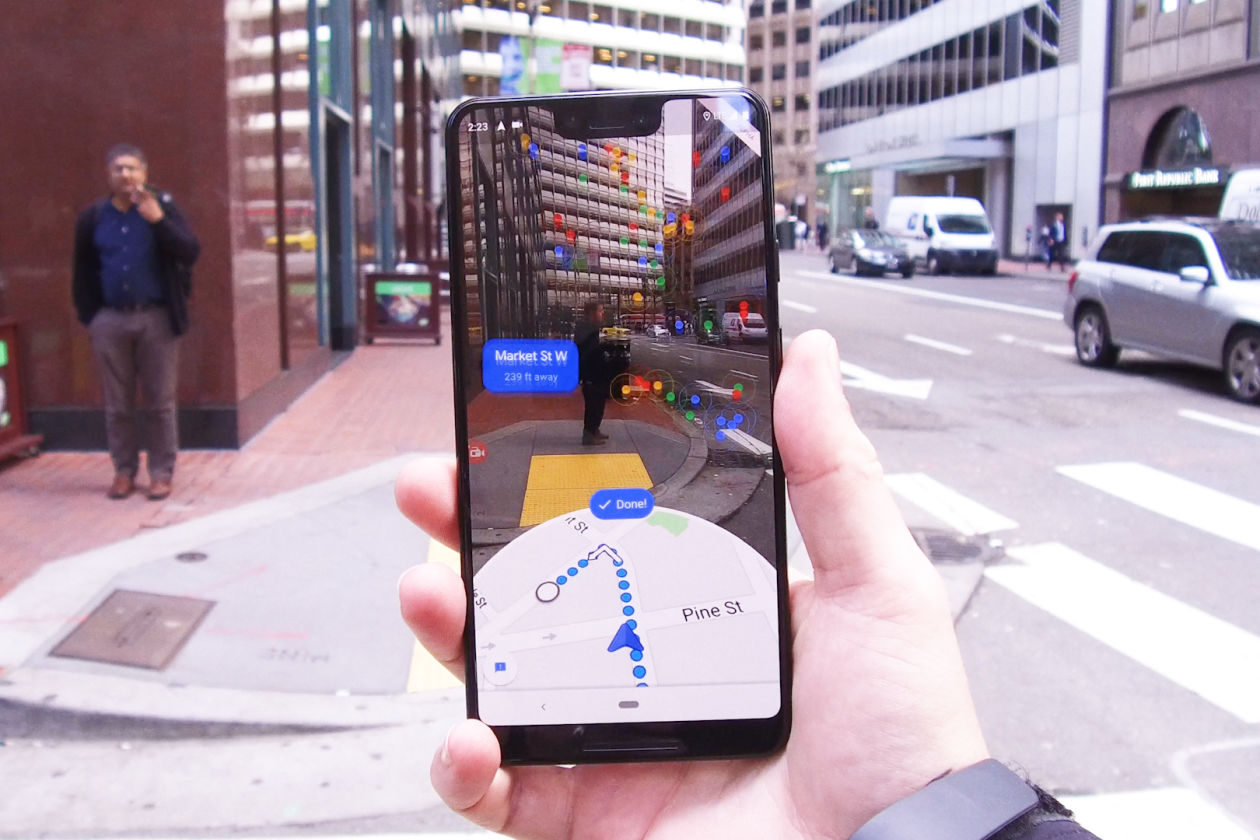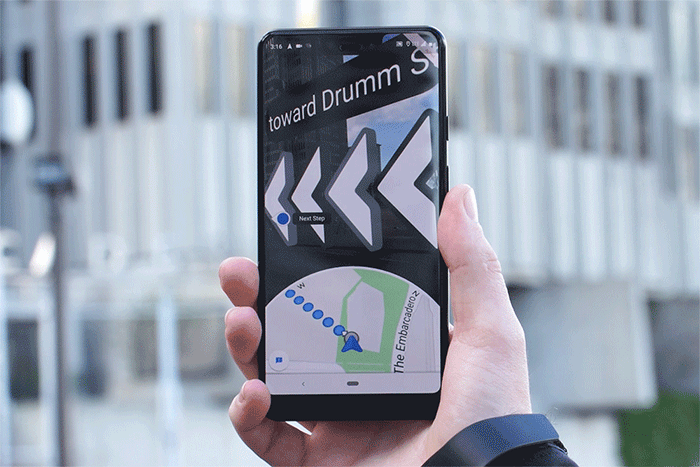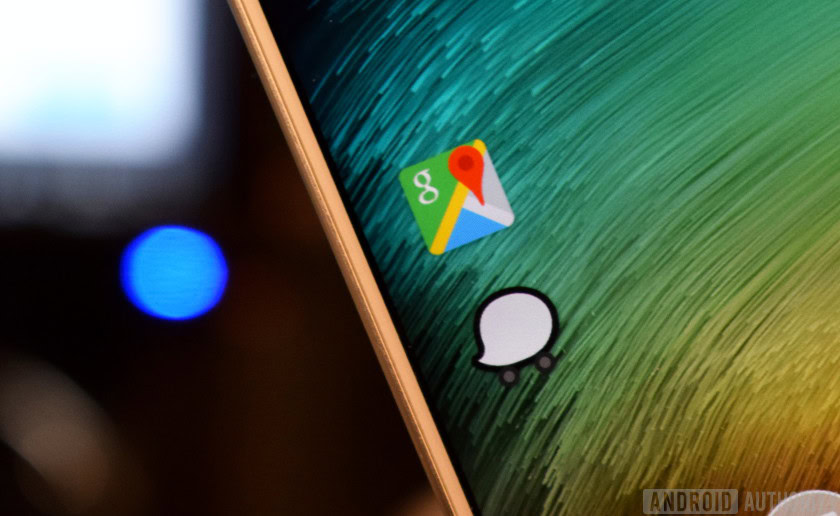Affiliate links on Android Authority may earn us a commission. Learn more.
No more walking in the wrong direction with the upcoming AR experience on Google Maps
Published onFebruary 10, 2019

At the Google I/O 2018, the company teased how Google Maps can leverage the camera to overlay walking directions and business listings for an Augmented Reality (AR) experience via its new Visual Positioning System (VPS).
Essentially, when your GPS is not enough, VPS will use your phone’s camera and Google’s extensive back-end data to analyze your surroundings to estimate your precise position and orientation to identify where you are with greater accuracy.
There has been no word on this since then, but earlier today, The Wall Street Journal shared the first look of the upcoming AR navigation feature.
In this demoed version of Google Maps, there is a new “Start AR” option alongside the traditional “Directions”. Once you tap on it, the map is replaced by a real-time view of the world around you along with the traditional overhead map.

Users will have to first move their phone around and point the camera to things around them so that the camera can recognize some landmarks to calibrate where the user is. The app essentially matches the recognized landmarks and objects with all the imagery and data the company has captured with those Street View cars roving around.
A moment after the app found me, a set of bold, can’t-miss-’em 3-D arrows appeared on my phone screen, hovering in the middle of the street. The arrows pointed right, so I headed right. That’s when a rectangular blue sign appeared, floating above the sidewalk: 249 feet until my next turn. At the corner, the arrows again pointed right, and down the street a phone booth-size red pin marked my destination. It was as if Maps had drawn my directions onto the real world, though nobody else could see them.

The company has shared with the WSJ that this upcoming feature is meant for walking directions and not to be used while driving. There are also a few nifty features to conserve your phone’s battery life and data usage, for example, lowering your phone will flip to the standard map while the screen automatically darkens after a period of time.

The AR feature is particularly useful at the beginning of a journey when a person usually starts walking in a particular direction only to realize that he/she is going the opposite way or when one gets out of the subway and isn’t sure of which direction, he/she needs to head to. By making use of the smartphone camera, Google Maps will get a more-detailed sense of where you are and where you need to go.
While this definitely looks exciting, most of us will have to wait a little longer before we can take it for a spin. The feature will be rolling out soon to a few Local Guides, the most active reviewers and users of Google Maps, and will come to everyone at a later stage since the company thinks it needs a lot more testing before the experience is ready for a broader availability.